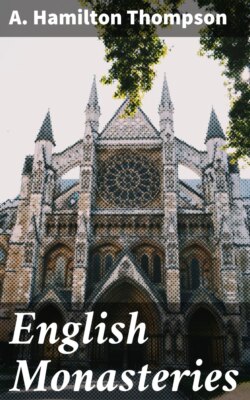Читать книгу English Monasteries - A. Hamilton Thompson - Страница 18
На сайте Литреса книга снята с продажи.
§ 15.
ОглавлениеTable of Contents
One point in the Cistercian rule, which arose from this self-contained ideal and had an important influence upon the planning of Cistercian buildings, was the division of the brethren of each abbey into monks (monachi) and lay brothers (conversi)[1]. The Cistercian monk was a clerk who could read and write. Like a Benedictine monk, he was not necessarily a priest, although it became very general for monks to proceed to priest's orders. His duties lay in the church and cloister, and, unless he held an office such as that of cellarer or kitchener, he was not immediately concerned with the business affairs of his convent. These, which in Benedictine houses were largely transacted by tenants or hired labourers and servants, were performed in Cistercian houses by the conversi. A conversus was a layman who had turned from the service of the world to that of God. He entered the convent as a novice and in due course made his profession. He was precluded from learning to read or write and from taking holy orders. He was taught a few prayers and psalms by heart, but his business was manual labour in the convent workshops, or in its fields and granges. On ordinary work-days he had to attend part of the night-office and, if he was not stationed in a grange, had to come to compline. He observed the other hours by the recitation of special prayers at his work. His life was regulated by statutes which in respect of abstinence, silence and other similar essentials resembled those of the monks. The conversi had their own separate common rooms in the cloister buildings, their own quire in the church and their own infirmary. They rose at an hour which was specially calculated to allow them enough sleep before their day's work: their chapter was held by the abbot only on Sundays and certain feast-days. Thus the convent was provided with all the workmen whom it needed. Some conversi were deputed to live upon the convent granges, each of which had a conversus as prior. The white frocks and cowls of the monks gave the Cistercians their distinctive name of white monks as opposed to the Benedictines or black monks: the dress of the conversus was a cloak (cappa), tunic, stockings (caligae), boots (pedules) and a hood (capucium) covering only the shoulders and breast[2].
